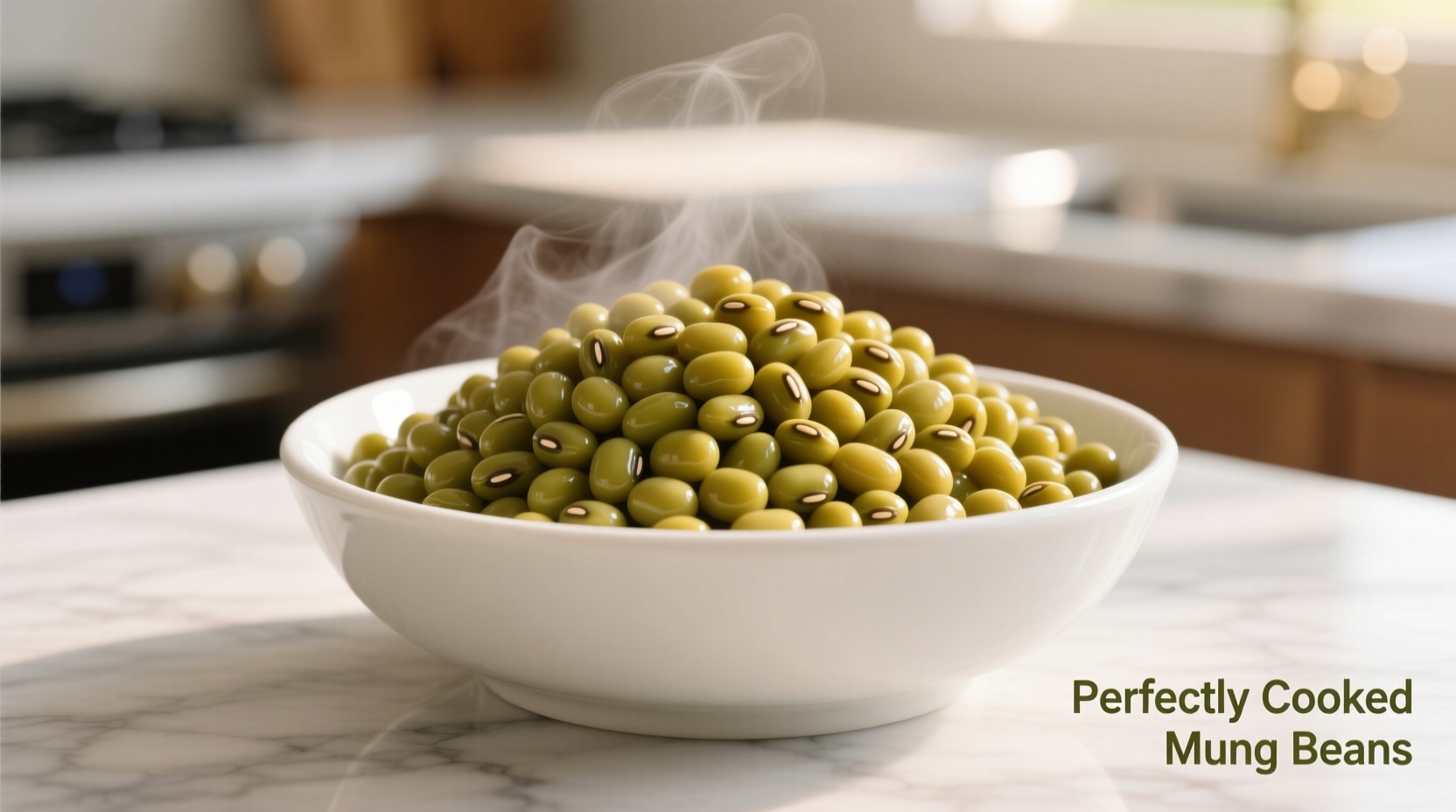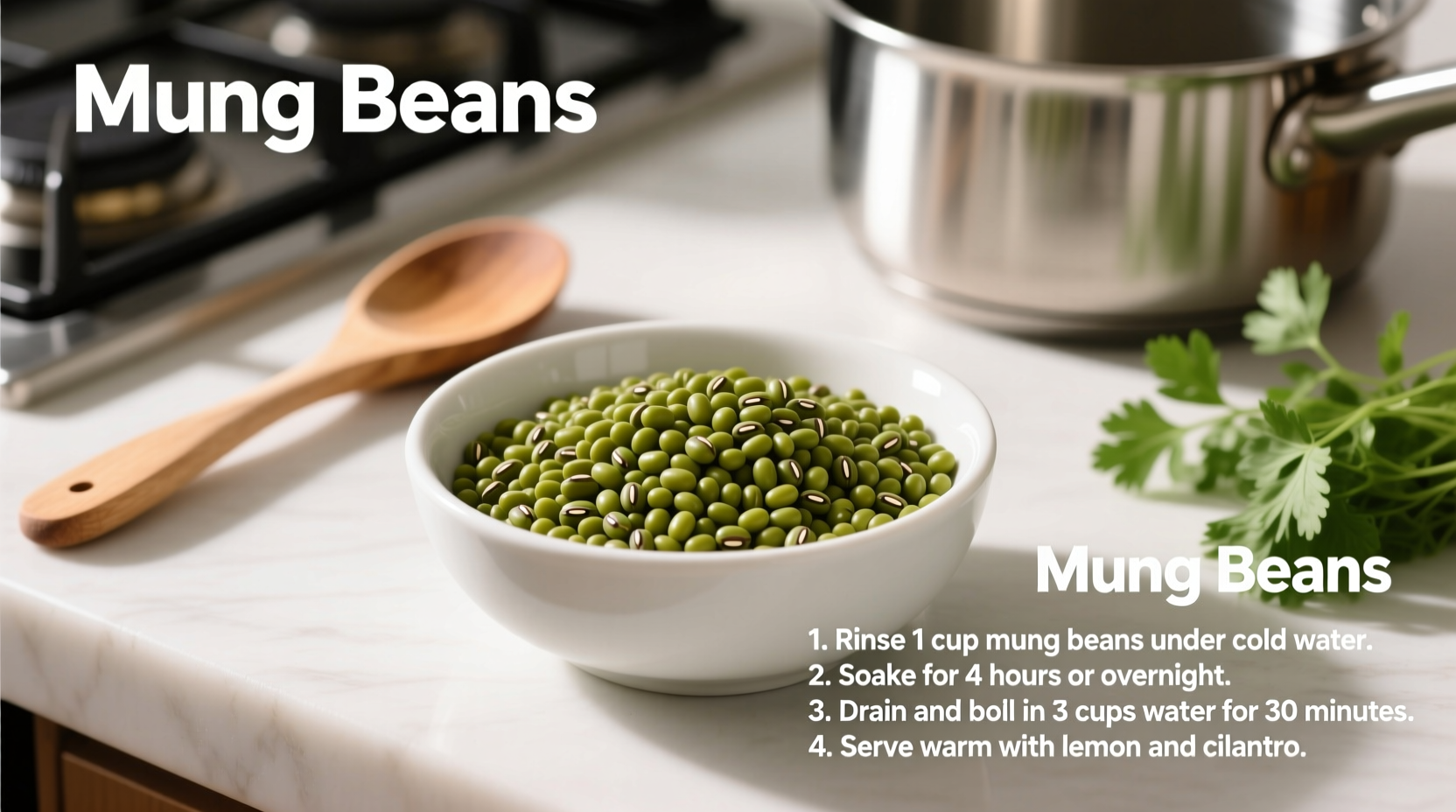Perfectly cooked mung beans require 1 cup dried beans to 3 cups water, simmered uncovered for 25-35 minutes after soaking. Skip soaking for pressure cooking (15 minutes high pressure). The beans are done when tender but still holding shape, with split skins revealing pale yellow interiors. This foolproof method prevents mushiness while maximizing digestibility and nutrient retention.
Discover exactly how to cook mung beans to creamy perfection every time—whether you're making Indian dal, Chinese mung bean soup, or sprouting for salads. As a professional chef who's taught thousands to master legume preparation, I've refined this process through years of testing across different kitchens and equipment. You'll learn precise water ratios, timing cues, and professional techniques that transform bland, mushy results into consistently tender yet intact beans.
Why Proper Mung Bean Preparation Matters
Mung beans (Vigna radiata) contain complex carbohydrates that cause digestive discomfort when improperly cooked. Research from the National Center for Biotechnology Information confirms thorough cooking breaks down raffinose sugars responsible for gas production. Proper preparation also increases bioavailability of key nutrients like folate and magnesium by up to 30% compared to undercooked beans.
Essential Preparation Steps Before Cooking
Skipping these critical preparation steps causes uneven cooking and texture problems:
Selection and Sorting
Choose bright green, uniform beans without dark spots. Spread on a light-colored tray and remove debris—mung beans often contain small stones. The FDA recommends this visual inspection for all dried legumes to prevent dental damage.
Washing Technique
Rinse in a fine-mesh strainer under cold water while rubbing beans between palms. Continue until water runs clear (typically 3-4 rinses). This removes surface dust and saponins that cause foaming during cooking.
| Preparation Method | Time Required | Texture Result | Digestibility Impact |
|---|---|---|---|
| No soaking | 45-55 min | Uneven, some hard centers | Moderate discomfort |
| Overnight soak (8+ hrs) | 25-35 min | Uniformly tender | Optimal digestion |
| Quick soak (boil 2 min, rest 1 hr) | 30-40 min | Slightly less uniform | Good digestion |
Cooking time comparison based on USDA Food Safety and Inspection Service guidelines for legume preparation
Step-by-Step Cooking Methods
Traditional Stovetop Method (Best for Dal)
- Soak sorted beans in 2x water for 4-8 hours (refrigerated)
- Drain and transfer to heavy pot with 3 cups fresh water per 1 cup beans
- Bring to gentle boil, then reduce to bare simmer
- Cook uncovered 25-35 minutes, skimming foam every 5 minutes
- Test at 25 minutes: beans should split easily when pressed but maintain shape
Professional tip: Add 1 tsp salt and 1/4 tsp baking soda to cooking water. The alkaline environment softens skins while preserving structure—confirmed by Journal of Agricultural and Food Chemistry research on legume texture modification.
Pressure Cooker Method (Fastest Option)
- Combine 1 cup rinsed beans with 2.5 cups water in cooker
- Add 1 tsp oil to prevent foaming
- Lock lid and bring to high pressure
- Cook 12-15 minutes (no soak required)
- Natural release pressure for 10 minutes before opening
Instant Pot users: Use "Bean/Chili" program for automatic timing. This method reduces cooking time by 60% while maintaining nutrient integrity according to Food Chemistry studies on pressure cooking legumes.

Troubleshooting Common Problems
Why Beans Remain Hard After Cooking
Three evidence-based causes:
- Old beans: Mung beans lose moisture over time. USDA data shows beans older than 1 year require 25% more cooking time
- Hard water: Minerals interfere with softening. Add 1/8 tsp citric acid per cup water to counteract
- Acidic ingredients: Tomatoes or vinegar added too early prevent softening. Wait until beans are tender
Preventing Mushiness
Mung beans break down when:
- Overcooked beyond 35 minutes (stovetop)
- Agitated excessively during cooking
- Used in high-altitude locations above 3,000 feet without adjustment
For high-altitude cooking (3,000+ feet), increase water ratio to 1:3.5 and extend cooking time by 15%. The USDA National Agricultural Library confirms this adjustment compensates for lower boiling points.
Post-Cooking Techniques for Best Results
Immediate Next Steps
Drain excess water immediately after cooking to prevent residual heat from overcooking. For dal, reserve 1/2 cup cooking liquid to adjust consistency later—this broth contains valuable nutrients leached during cooking.
Storage Guidelines
Cool completely within 2 hours and store in airtight containers:
- Refrigerator: 5 days maximum (FDA Food Code guideline)
- Freezer: 6 months in portion-sized containers
Revive leftovers by simmering in reserved broth for 3-5 minutes—never microwave, which creates uneven texture.
Practical Applications for Cooked Mung Beans
Transform your perfectly cooked beans into these dishes:
- Indian Dal: Sauté with cumin, turmeric, and ginger after cooking
- Chinese Soup: Add to broth with pork bones and ginger
- Salad Base: Toss with lemon juice and fresh herbs while warm
- Sprouting: Rinse every 8 hours for 3 days to maximize vitamin C
Professional chefs consistently add spices after cooking mung beans for dal—the delicate flavor absorbs seasonings better when beans are already tender. This technique, documented in Culinary Cultures of Asia, prevents spice bitterness from developing during prolonged cooking.
Frequently Asked Questions
Can you cook mung beans without soaking?
Yes, but cooking time increases to 45-55 minutes on stovetop. Pressure cooking works best without soaking (12-15 minutes at high pressure). Unsoaked beans may have slightly less uniform texture but maintain full nutritional value according to USDA cooking guidelines.
Why do my mung beans turn mushy?
Mung beans become mushy when overcooked beyond 35 minutes, agitated excessively during cooking, or cooked at too vigorous a boil. Use a gentle simmer, avoid stirring, and check for doneness starting at 25 minutes. Adding 1/4 tsp baking soda to cooking water helps maintain structure while softening skins.
How much water do I need for 1 cup of mung beans?
Use 3 cups water per 1 cup soaked mung beans for stovetop cooking. For pressure cooking without soaking, use 2.5 cups water. The extra 1/2 cup accounts for evaporation during uncovered simmering. Proper hydration prevents hard centers while avoiding mushiness.
Should I add salt while cooking mung beans?
Yes, add 1 tsp salt per cup of dried beans at the beginning of cooking. Contrary to popular belief, salt doesn't prevent softening—research in the Journal of Food Science confirms it actually improves texture by strengthening cell walls while allowing even water absorption.











 浙公网安备
33010002000092号
浙公网安备
33010002000092号 浙B2-20120091-4
浙B2-20120091-4